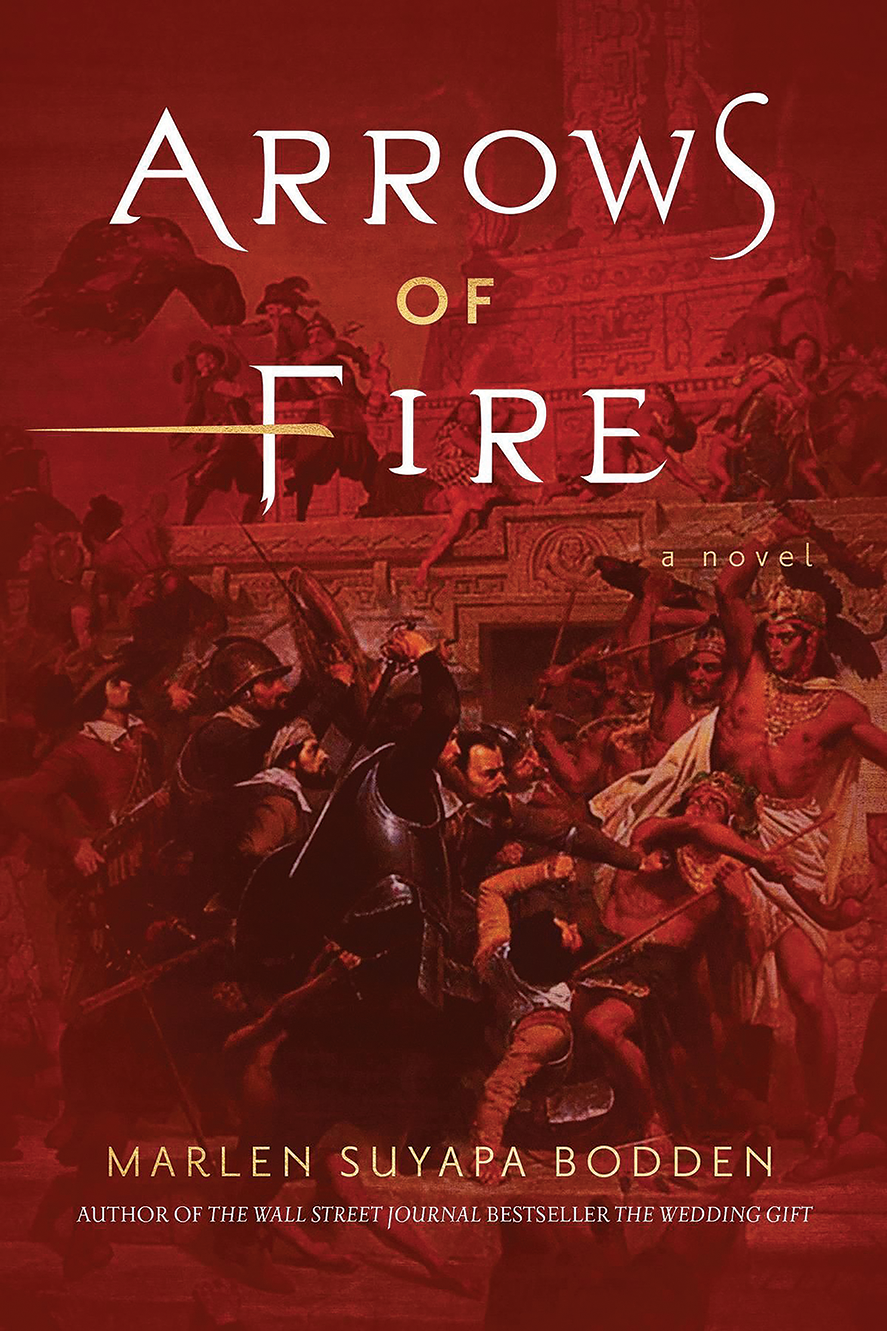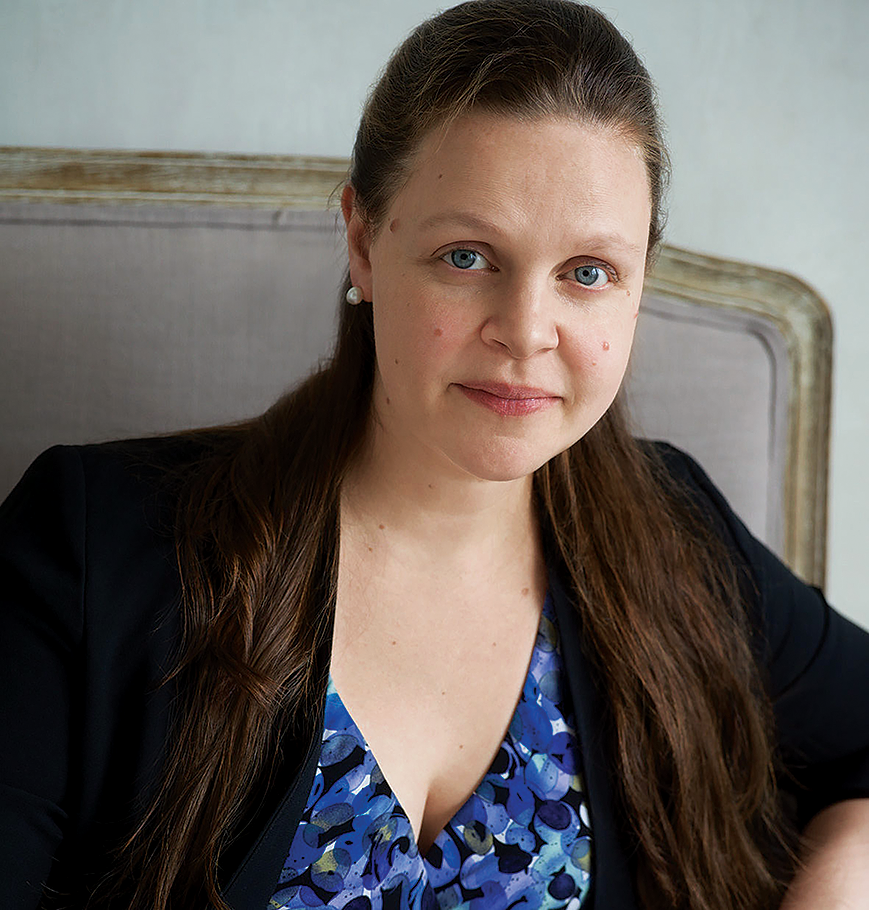Marlen Suyapa Bodden came to the United States from Honduras in May 1968 when she was seven. She and her three siblings joined her father, a mechanic, who had arrived a few years earlier, seeking more opportunities to find work. Bodden spoke no English and immediately enrolled in summer-school English classes so she could start second grade at a public school that fall. She loved to read; she got her first library card at age ten and spent hours in the library. Around that time Bodden started writing stories and fantasized about one of her novels someday being on a library shelf. But her family’s working-class background motivated Bodden to think in more practical terms and, influenced in part by her older brother, a lawyer, Bodden decided to become a lawyer herself. She attended New York University Law School and started working as an attorney at the Legal Aid Society in New York, a job she has held for more than twenty-five years. Still, she remained interested in writing and self-published a novel, The Wedding Gift, in 2010. The book became a Wall Street Journal best-seller, and, although it was initially rejected by agents, Victoria Sanders took on Bodden as a client. Sanders sold The Wedding Gift to St. Martin’s Press in the United States and Random House in the United Kingdom and in several other countries. I spoke with Bodden about self-publishing Arrows of Fire, her second novel, about the Spanish explorer Hernán Cortés’s fight against Moctezoma to take over Mexico. For insights into today’s publishing environment and strategies for developing a fan base, I spoke with Juliet Grames, associate publisher at Soho Press, and Fauzia Burke of FSB Associates.
The Author’s Approach
The inspiration for Arrows of Fire came from a visit to the Mayan ruins when I was in college. I saw a round stone with grooves and learned that those grooves allowed blood to drain during human sacrifices. I literally said, “Wow, this would be a dramatic part of a book.” Soon after, in a history class, however, I learned about a slave given to a woman as a wedding gift by her father, which I also thought would make for a great story. I was too busy with school and, later, practicing law, so I figured I would return to these stories when I retired. But I couldn’t put aside what I had read about the treatment of women and slaves, so I spent about nine years researching and writing what became The Wedding Gift. I had taken a writing course at NYU Continuing Education, and my classmates urged me to find a literary agent. I sent out four hundred queries and got very few responses; those who responded said they couldn’t sell a book about slavery. Around this time, in 2009, digital publishing was just taking off, so I decided that I would self-publish. I asked my husband and my best friend to read the book. I didn’t want to hear whether they liked it; I only wanted them to tell me whether anything was slow, confusing, or contradictory. Then I paid to have the book edited. I self-published The Wedding Gift in 2010, and it made the Wall Street Journal best-seller list. I did lots of publicity, and the book received much recognition and made other “best” lists. I then got an agent, Victoria Sanders, who sold the book to St. Martin’s.
After doing everything myself when I initially self-published, it was a luxury to have editors and publicists. Random House, the British publisher, did an elaborate photo shoot for the jacket, and I was impressed by the level of attention to detail.
As soon as St. Martin’s bought The Wedding Gift, I started research on Arrows of Fire. Again, I read both primary and secondary sources. There were a tremendous number of primary sources in Spanish, including letters from Cortés and lawsuits against him. The research was fascinating. Fellow conquerors sued him for stealing the “royal fifth,” the share of money given to the crown after every conquest. The crown sent two judges to investigate Cortés; he invited both to dinner, and the judges were never seen again. I went to Mexico twice for research, but in fact Cortés’s last will and testament is available at the New York Public Library Rare Book Division. Conquest: Cortés, Montezuma, and the Fall of Old Mexico by Hugh Thomas was an invaluable resource.
Just as people thought that a book about slavery wouldn’t be popular, editors said that few readers would be interested in a book about the conquest of Mexico. I briefly thought about trying to find a publisher but then realized I had learned a lot about traditional publishing and figured I should just publish it myself. I knew the book needed to be edited, so I used several editors; this was the costly part of the process. I first hired a developmental editor to help make the book more accessible as a novel. The second editor provided an overall critique and also did some independent research. The last editor corrected grammar and proofread the manuscript.
I hired 1106 Design, a full-service company, to get a “premium” cover. I read blogs on historical fiction and researched what covers work well in this genre. I found a photograph that I wanted to use, but it was difficult to buy the rights, so the design firm created the jacket for Arrows of Fire. I wasn’t familiar with the classical image they used, but I liked it. I worked on every detail, from the font to the back-cover copy.
From start to finish, it took me seven years to publish Arrows of Fire, two years less than my first book. Since Arrows of Fire is about Indigenous people and the conquest of Mexico, I knew I wanted to publish it on Columbus Day 2019, which also marked five hundred years since Cortés invaded Mexico.
The reality is if you don’t have a huge platform or aren’t a celebrity, the media isn’t going to be that interested in your book. For my first book, I asked everyone I knew who had a connection to a university or organization if I could do an event. I gave commencement speeches up and down the East Coast. I did lots of local television as well as signings at libraries, and I expect to do more library events for Arrows of Fire. I enjoy going to book clubs regardless of the number of attendees. I was invited to the John Cooper School Signatures Author Series in the Woodlands, even though I’m not a Texas local.
I’m on Goodreads, though it is disappointing that some of the comments on this site and Amazon are so negative. If someone has read my book and has valid criticism, that’s fine. But when anonymous people make nasty comments, you have to ignore them.
If you’re going to be on social media, you have to be genuinely engaged. I don’t just plug the book. I am interested in politics, human rights, civil rights, and criminal justice, and I post articles about these issues. I respond to comments from people. I’ll also advertise on Facebook and Instagram; I believe the latter is growing faster than Facebook, so authors should seriously consider being on Instagram.
My advice to authors planning to self-publish:
• Self-publishing doesn’t mean DIY. You can hire a company to do everything, including editing and proofreading, interior and cover design, getting an ISBN, drafting cover copy, and uploading the book to your chosen distributor. You can choose the services you want. If you’re computer savvy, there are numerous programs that allow you to easily design your book cover and interior. But you must hire an experienced editor and proofreader.
• Do your own research. I found my editors through the American Copy Editors Society and the Editorial Freelancers Association.
• Consider creating an audiobook. Audiobooks are incredibly popular, and I made one for Arrows of Fire.
• Spend money on a publicist but don’t expect immediate results. Try to get as much coverage as you can, but don’t count on getting booked on the Today show.
• Have or acquire a very thick skin. Authors, especially self-published ones, must learn not to be offended by harsh criticism.
A Publisher’s Perspective
Juliet Grames is associate publisher at Soho Press in New York City. She is the author of the acclaimed novel The Seven or Eight Deaths of Stella Fortuna (Ecco, 2019).
I am a traditionalist. It makes me sad when a book with merit is self-published; the book won’t get as wide a readership and may be ineligible for some prizes. It took me a very long time to find an agent and then a publisher, so I always encourage authors to keep trying to find the right home for their book. That said, I understand people want to share their creative output, and that is a compelling reason to self-publish.
Word of mouth is the key to a successful book launch, which Bodden appears to understand. Social media is incredibly effective in boosting attendance at book events. Facebook and Instagram have been vital, allowing me to reach strangers and tell them where I will be speaking. It is time-consuming, but it has been very helpful.
Bodden’s willingness to speak at libraries is a terrific strategy. Libraries are great places to reach serious readers, even if you can’t sell your book.
I am on Goodreads, but as an author I don’t interact with any fans. I specifically recommend that authors not respond to any negative comments on the site. It can be infuriating when someone has misunderstood a book. But when you react to the readers’ opinions, you end up looking like a jerk.
As an author and someone who has worked in publishing for a long time, I believe that community bookstores are vital cultural institutions. In addition to selling books, they provide jobs and safe places for kids, and they offer essential psychological development for younger people. Most important, the presence of bookstores in a town helps promote reading as a valued activity.
For these reasons, if you’re self-publishing, you should look for a platform that will allow your books to be distributed in stores and online. It can be challenging, and some bookstores won’t even take a self-published title on consignment, but all authors should try to have their books available in brick-and-mortar stores.
Other tips if you’re self-publishing:
• Packaging is very important, more so than content. If readers can’t get past the cover, they won’t get to the content. Remember that an aesthetically appealing image may not reproduce well as a thumbnail on a phone. If you’re not visually focused, hire a professional to design the cover.
• Choose key words when you’re writing back-cover copy as well as descriptions for online sites. You want to entice readers to buy your book.
• Consider hiring a project manager who is knowledgeable about the publishing process and will offer objective advice to ensure your self-published book looks as professional as those from traditional publishers.
A Marketer’s Remarks
Fauzia Burke worked at John Wiley, Springer-Verlag, and Henry Holt before starting FSB Associates, one of the first companies to specialize in internet publicity and marketing for publishers and authors. She is the author of Online Marketing for Busy Authors: A Step-by-Step Guide (Berrett-Koehler, 2016).
I think the online community is more open to the quality of books and is less concerned about whether they’re self-published or traditionally published. Still, since traditional publishers offer a “stamp of approval” and “credibility,” self-published authors need some social proof to get the media’s attention. That means endorsements, coverage of previous books, or a personal or company brand. In my view, Bodden isn’t capitalizing on her social proof. The reviews of her first book are amazing, and they should be on the back cover of Arrows of Fire; she should also highlight that The Wedding Gift was a Wall Street Journal best-seller. The back-cover description could be more informative with details about Flower, the novel’s protagonist. Book copy should persuade readers to care about the characters. The author’s name should be more prominent. In addition, I think the bright red color of the jacket doesn’t work well. The color stands out instead of the title or Bodden’s name.
It’s good that Bodden is willing to talk about the book wherever she can. When you connect to people in person, that interaction is more memorable than a digital meeting. The author’s enthusiasm for library events is well founded because these kinds of events attract serious readers. There’s a secondary benefit as well: Authors can post a schedule of upcoming events on their websites and post photos after the event. You can also take a short video or videotape the entire reading and post to your website or YouTube.
It’s unfortunate that some of the Goodreads comments have been negative. Using this site can help authors get reviews, and the giveaways can be very effective. If you don’t want the expense of giving out physical books, you can offer e-books.
Bodden is active on Twitter and Facebook, which is great. However, many authors jump into social media right around the publication date. In fact it takes from eighteen months to two years to build up engagement and visibility for social media to be useful. Authors can talk about the writing process and what they’ve uncovered in their research. People who are interested in the historical period you’re writing about want to hear about your journey. You can also discuss the writing process and share jacket designs. You can show readers that you care about their opinions, not just selling your book.
My advice for other self-published authors:
• The packaging of the book must be spot-on. In addition to the editing, you must have a professional design and strong cover and flap copy. No amount of time or money will get your book reviewed if it looks amateurish.
• Before spending money on publicity or advertising, make sure your digital house is in order. Have a professional website and a mailing list, and be active on social media. Any mention of your book is an opportunity to grow your mailing list and your community.
• Start a mailing list. An e-mail list can be even more powerful than social media. You can promote your blog post about your research. When people give you an e-mail address, they’re extending you a level of trust that social media can’t match. Use Mailchimp or Constant Contact for easy maintenance.
• Take advantage of Amazon. Claim your author page on the site. Include your photo and a bio, and have a Follow button on the page. This will allow readers to click to follow you—much as they do on social media.
Debra Englander is a New York City–based freelance editor, writer, and book coach. She has written about business and books for numerous publications, including USA Today, Good Housekeeping, and Publishers Weekly.












